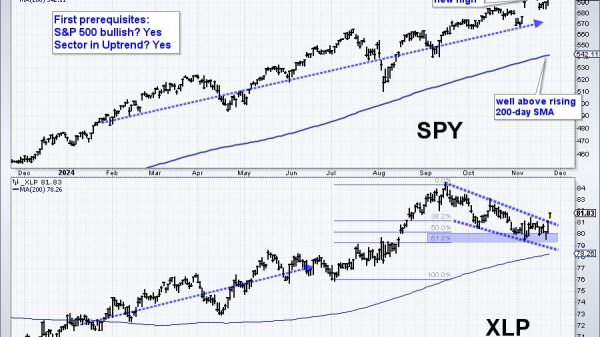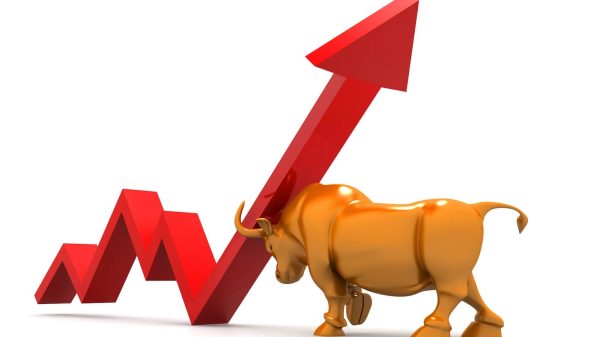Advocates of Keynesian economics believe the Federal Reserve should pursue policies that will prevent the possible decline of the economy into a liquidity trap. But what is a liquidity trap?
Economic activity often is presented in terms of a circular flow of money. Spending by one individual becomes part of the earnings of another individual, and spending by another individual becomes part of the first individual’s earnings. Recessions, by this thinking, occur because consumers—for whatever reason—have decided to cut spending and increase their savings.
For instance, if people become less confident about the future, they are likely going to lower their outlays and hoard money. Therefore, if an individual spends less, this is going to worsen the situation of some other individual, who in turn also cuts spending. A vicious cycle sets in—the decline in an individual’s confidence causes him to spend less and to hoard more money, and this lowers economic activity further, thereby causing individuals to hoard more, and so on.
Keynesians believe that to prevent a recession from expanding, the central bank must lift the growth rate of money supply and aggressively lower interest rates. Once individuals have more money in their pockets, their confidence will increase, and they will start spending again, thereby reestablishing the circular flow of money.
However, a situation could emerge where an aggressive lowering of interest rates by the central bank brings rates to a level from which they cannot fall further, keeping the central bank from reviving the economy. Because individuals believe interest rates have bottomed out and that interest rates should rise, there are capital losses on bond holdings.
As a result, demand for money would rapidly increase, meaning people would hoard money and refuse to spend it no matter how much the central bank tried to expand the money supply. John Maynard Keynes wrote:
There is the possibility, for the reasons discussed above, that, after the rate of interest has fallen to a certain level, liquidity-preference may become virtually absolute in the sense that almost everyone prefers cash to holding a debt which yields so low a rate of interest. In this event the monetary authority would have lost effective control over the rate of interest.
Keynesians believe that once a low interest-rate policy becomes ineffective, government should increase spending. The spending can be on any projects as what matters is pumping money into the economy to boost consumers’ confidence. With more confidence, consumers will lower their savings and increase spending, thereby reestablishing the circular flow of money.
Does a Liquidity Trap Emerge Because of Lack of Spending?
Thus, according to Keynesians, the ever-expanding monetary flow is the key for economic prosperity. Spending drives economic growth, and when people spend more of their money, they save less.
Conversely, when people reduce spending, they usually save more, which Keynesians believe is bad news for the economy. The more individuals save, the worse things become. The liquidity trap comes from too much saving and too little spending.
Note, however, that in a real economy, individuals actually pay for purchases with goods that they have produced. Money performs the role of the medium of exchange. Hence, the demand for goods is constrained by production, not by the amount of money which exists to facilitate the exchange.
The implication of a liquidity trap is that no one would be exchanging goods. (It would mean that individuals do not exchange money any longer for goods.) Obviously, this is not a realistic proposition given the fact that individuals require goods to support their lives and well-being. (Please note that individuals demand money not to accumulate it but to employ it in exchange.)
As a medium of exchange, money only assists in exchanging the goods of one producer for the goods of another producer. The service that money provides has nothing to do with the production of final consumer goods, nor with real savings. An increase in capital goods permits increases in real savings and in the production of goods that improve quality of life.
Real savings sustain individuals employed in the stages of production. The demand for money cannot increase the amount of final consumer good; only the expansion of real savings can boost the production of these goods. Likewise, an increase in the supply of money cannot grow the real economy. Contrary to popular thinking, a liquidity trap does not emerge in response to consumers’ massive increase in the demand for money, but it comes as a result of very loose monetary and fiscal policies which inflict severe damage to real savings.
Liquidity Trap and the Shrinking Pool of Real Savings
According to Ludwig von Mises:
The sine qua non of any lengthening of the process of production adopted is saving, i.e., an excess of current production over current consumption. Saving is the first step on the way toward improvement of material well-being and toward every further progress on this way.
As long as the savings growth rate stays positive, the economy can continue to sustain productive and nonproductive activities. Trouble erupts, however, when loose monetary and fiscal policies cause a structure of production to emerge that ties up more consumer goods than what it releases. (The consumption of final consumer goods exceeds the production of these goods.) This excessive consumption relative to the production of consumer goods leads to a decline in real savings, which weakens the support for individuals employed in the production structure, resulting in the economy plunging into a slump.
Once the economy falls into a recession, any attempts by government or central bank to revive the economy will fail. Not only will these attempts fail to revive the economy, but they will also deplete real savings further, thereby prolonging the economic slump. The shrinking pool of real savings exposes the commonly false view that loose monetary and fiscal policies can grow an economy.
The fact that central bank policies become ineffective in reviving the economy is not due to a liquidity trap but rather the decline of real savings. This decline emerges because of previous loose monetary and fiscal policies.
The ineffectiveness of loose monetary and fiscal policies to generate the illusion that the central authorities can grow an economy has nothing to do with liquidity traps. Policy ineffectiveness is always relevant whenever the central authorities are attempting to “grow an economy.” The only reason why it appears that these policies “work” is because real savings are still expanding.
Monetary Liquidity and the Stock Market
When the money supply increases, it enters various markets, including the stock market. Whenever new money enters a particular market, there is a greater amount of money per unit of goods in that market.
A price of a good or asset is the amount of money per unit. Hence, an increase in money supply results in an increase in the prices of goods and assets. For a given amount of money, the value of stocks is going to be determined by the real wealth produced by activities that stocks represent. With the expansion and the enhancement of the capital goods infrastructure, wealth and economic growth will emerge.
Central bank tampering with the money supply misleads investors. They perceive the increase in money as an increase in wealth, which leads them to push the stock market higher. As long as real savings expands, central bank monetary policies appear to be driving the stock market. Once savings decline, the stock market will follow suit. The attempt by the central bank to counter a liquidity trap will prolong the economic slump and the bear market in stocks.
Conclusion
Contrary to popular thinking, if the US economy were to fall into a liquidity trap, the reason would not be a sharp increase in the demand for money, but it would be because previous loose monetary and fiscal policies had depleted the pool of real savings. Pumping more money into the economy once it has fallen into a liquidity trap, as suggested by some economists, will only weaken the pool of real savings further and likely guarantee that the economy is going to stay in a depressed state for a prolonged time.
Policy ineffectiveness is always present when the central authorities attempt to increase economic growth. The only reason why the illusion that central authorities can expand the economy seems real is because of a temporary expansion of real savings. When savings decline, then these monetary policies create an economic downturn.
























